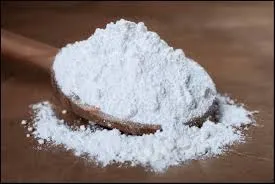
aprotic and protic solvents
Protic and Aprotic Solvents Understanding the Differences and Their Applications
Solvents play a crucial role in various chemical reactions, extractions, and applications across multiple scientific fields, including chemistry, biology, and pharmaceuticals. They often serve as the medium in which reactants are dissolved, facilitating important interactions. Among the diverse array of solvents, two primary classifications stand out protic and aprotic solvents. Understanding the differences between these two types of solvents can provide insights into their behaviors and applications in different chemical processes.
What are Protic Solvents?
Protic solvents are characterized by their ability to donate hydrogen ions (protons) due to the presence of hydrogen atoms attached to highly electronegative atoms, such as oxygen or nitrogen. This unique feature allows protic solvents to engage in hydrogen bonding with solutes, which can influence the solubility and reactivity of various compounds. Common examples of protic solvents include water, methanol, and ethanol.
The presence of proton-donating capabilities within protic solvents can significantly affect chemical equilibria in reactions. For instance, in acid-base reactions, protic solvents can stabilize ions, thereby promoting the dissociation of acids and bases. This property is particularly important in biochemical reactions where enzymes rely on precise proton transfer mechanisms, and thus, the choice of solvent can directly impact reaction rates and yields.
Protic solvents often exhibit higher dielectric constants and greater polarity, facilitating the solvation of ionic compounds
. The strong interactions that protic solvents have with solute molecules can lead to enhanced ionization, making them favorable for reactions involving ionic species.What are Aprotic Solvents?
Conversely, aprotic solvents are those that lack hydrogen atoms bonded to electronegative elements and, consequently, cannot donate protons. These solvents do not participate in hydrogen bonding in the same way that protic solvents do. Common examples of aprotic solvents include dimethyl sulfoxide (DMSO), acetone, and acetonitrile.
aprotic and protic solvents

Aprotic solvents can serve as excellent mediums for reactions involving nucleophiles because they do not stabilize the nucleophiles through hydrogen bonding. This feature allows for a higher reactivity of nucleophilic species, making aprotic solvents particularly effective in reactions such as nucleophilic substitutions and eliminations. In addition, many aprotic solvents possess significant dielectric constants, which can aid in dissolving ionic compounds effectively.
Another significant aspect of aprotic solvents is their ability to influence reaction mechanisms. For example, in the context of organic synthesis, aprotic solvents can potentially facilitate bimolecular nucleophilic substitution (S_N2) reactions by providing an optimal environment that minimizes steric hindrance and maximizes the nucleophile's reactivity.
Selecting the Appropriate Solvent
The choice between using protic and aprotic solvents often depends on the specific requirements of the chemical reaction or application. When an accurate control of proton transfer is vital, protic solvents are preferred. They are also favored in biological systems where enzyme-catalyzed reactions must function under mild conditions. On the other hand, for reactions that involve strong nucleophiles or those requiring a non-polar medium, aprotic solvents are often more suitable.
It is helpful to remember the solubility of this error, as certain solutes may dissolve better in one type of solvent than the other due to their intrinsic properties. Moreover, the choice of solvent can influence the purity of the final product, reaction efficiency, and even the mechanistic pathway taken by reactants.
Conclusion
In conclusion, understanding the differences between protic and aprotic solvents is essential for chemists and researchers. Each type of solvent has its distinct characteristics that influence their interactions with solutes and overall reactivity. The optimal selection of a solvent—whether protic or aprotic—can significantly enhance the efficiency of chemical reactions, making solvents a vital consideration in experimental design and application across various fields of science.
-
The Safety Challenges of Ammonium Nitrate FertilizerNewsJun.26,2025
-
The Critical Role of Mining ChemicalsNewsJun.26,2025
-
Shelf Life of Glacial Acetic Acid Food GradeNewsJun.26,2025
-
Enhancing PVC Longevity with 1,2,3-Benzotriazole InnovationsNewsJun.26,2025
-
China’s Dominance in Food Additive ProductionNewsJun.26,2025
-
Can Aluminum Hydroxide Replace More Toxic Alternatives?NewsJun.26,2025
-
PE and PP Plastics with Benzotriazole AdditivesNewsJun.12,2025
Hebei Tenger Chemical Technology Co., Ltd. focuses on the chemical industry and is committed to the export service of chemical raw materials.
-

view more DiethanolisopropanolamineIn the ever-growing field of chemical solutions, diethanolisopropanolamine (DEIPA) stands out as a versatile and important compound. Due to its unique chemical structure and properties, DEIPA is of interest to various industries including construction, personal care, and agriculture. -

view more TriisopropanolamineTriisopropanolamine (TIPA) alkanol amine substance, is a kind of alcohol amine compound with amino and alcohol hydroxyl, and because of its molecules contains both amino and hydroxyl. -

view more Tetramethyl Thiuram DisulfideTetramethyl thiuram disulfide, also known as TMTD, is a white to light-yellow powder with a distinct sulfur-like odor. It is soluble in organic solvents such as benzene, acetone, and ethyl acetate, making it highly versatile for use in different formulations. TMTD is known for its excellent vulcanization acceleration properties, which makes it a key ingredient in the production of rubber products. Additionally, it acts as an effective fungicide and bactericide, making it valuable in agricultural applications. Its high purity and stability ensure consistent performance, making it a preferred choice for manufacturers across various industries.











